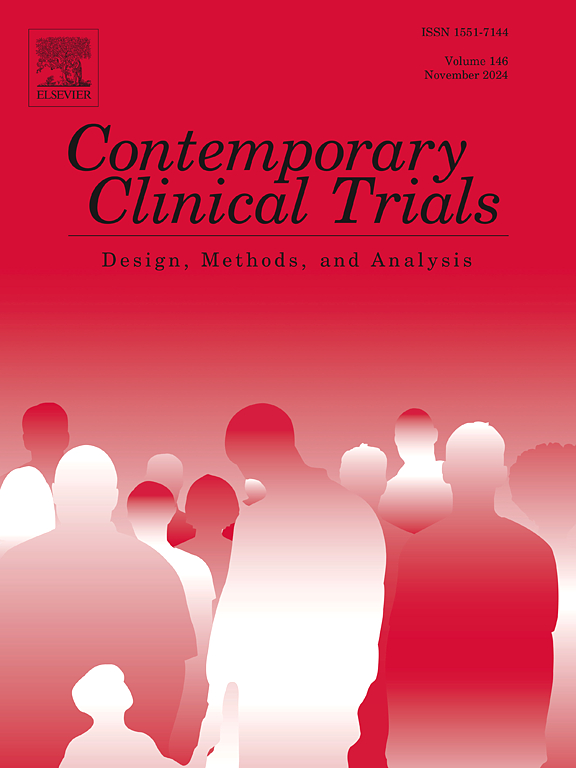Implementation of two non-drug pain prescriptions for musculoskeletal pain in primary care clinics
IF 1.9
3区 医学
Q3 MEDICINE, RESEARCH & EXPERIMENTAL
引用次数: 0
Abstract
Background
Chronic pain affects over 50 million Americans and is the main reason for primary care consultations. Clinical practice guidelines recommend use of non-drug therapies as first-line treatments. However, adoption and implementation of these guidelines are hindered by logistics. Exercise and transcutaneous electrical nerve stimulation (TENS) are effective non-drug strategies for managing chronic musculoskeletal pain, both of which have shown to reduce opioid usage. This study presents the results of implementing the Bundle for Exercises and TENS (BEsT) in primary care to facilitate prescription of non-drug therapy.
Methods
We developed an electronic bundle to facilitate prescription of TENS and exercise and trained providers to utilize the bundle. We identified providers who treated chronic pain from three primary care clinics to implement BEsT. Provider behaviors in prescribing TENS, exercise, opioids, non-opioid analgesics, and physical/occupational therapy (PT/OT) referrals were tracked. Surveys and focus groups captured provider perceptions of BEsT.
Results
After implementation of BesT, TENS prescription rates increased during training and were maintained in the 6–9 month follow up periods. Exercise prescriptions only increased during training. Across all clinics, opioid prescriptions decreased from 26 % to 14 %. Providers highlighted the auto-populate feature, patient education materials, and reduced opioid use as advantages of BEsT, but also noted increased time and staff burdens and workflow disruptions.
Conclusions
Providing decision making tools within provider workflow can increase use of non-drug therapy by primary care providers for chronic pain. However, prescriptions for non-drug therapies are hindered by increased the time and perceived burden to prescribe.
在初级保健诊所实施两种非药物疼痛处方治疗肌肉骨骼疼痛。
背景:慢性疼痛影响超过5000万美国人,是初级保健咨询的主要原因。临床实践指南建议使用非药物治疗作为一线治疗。然而,这些准则的采用和执行受到后勤方面的阻碍。运动和经皮神经电刺激(TENS)是治疗慢性肌肉骨骼疼痛的有效非药物策略,两者都表明可以减少阿片类药物的使用。本研究介绍了在初级保健中实施运动和TENS (BEsT)捆绑治疗的结果,以促进非药物治疗的处方。方法:我们开发了一种电子束,以方便TENS处方,并锻炼和培训提供者使用该束。我们从三个初级保健诊所找到治疗慢性疼痛的提供者来实施BEsT。追踪提供者在处方TENS、运动、阿片类药物、非阿片类镇痛药和物理/职业治疗(PT/OT)转诊中的行为。调查和焦点小组收集了供应商对BEsT的看法。结果:实施BesT后,TENS处方率在培训期间增加,并在6-9个 月随访期间保持不变。运动处方只会在训练期间增加。在所有诊所,阿片类药物处方从26% %下降到14% %。供应商强调了自动填充功能、患者教育材料和减少阿片类药物使用是BEsT的优势,但也注意到时间和人员负担增加以及工作流程中断。结论:在提供者工作流程中提供决策工具可以增加初级保健提供者对慢性疼痛的非药物治疗的使用。然而,非药物治疗的处方受到时间增加和处方负担的阻碍。
本文章由计算机程序翻译,如有差异,请以英文原文为准。
求助全文
约1分钟内获得全文
求助全文
来源期刊
CiteScore
3.70
自引率
4.50%
发文量
281
审稿时长
44 days
期刊介绍:
Contemporary Clinical Trials is an international peer reviewed journal that publishes manuscripts pertaining to all aspects of clinical trials, including, but not limited to, design, conduct, analysis, regulation and ethics. Manuscripts submitted should appeal to a readership drawn from disciplines including medicine, biostatistics, epidemiology, computer science, management science, behavioural science, pharmaceutical science, and bioethics. Full-length papers and short communications not exceeding 1,500 words, as well as systemic reviews of clinical trials and methodologies will be published. Perspectives/commentaries on current issues and the impact of clinical trials on the practice of medicine and health policy are also welcome.

 求助内容:
求助内容: 应助结果提醒方式:
应助结果提醒方式:


